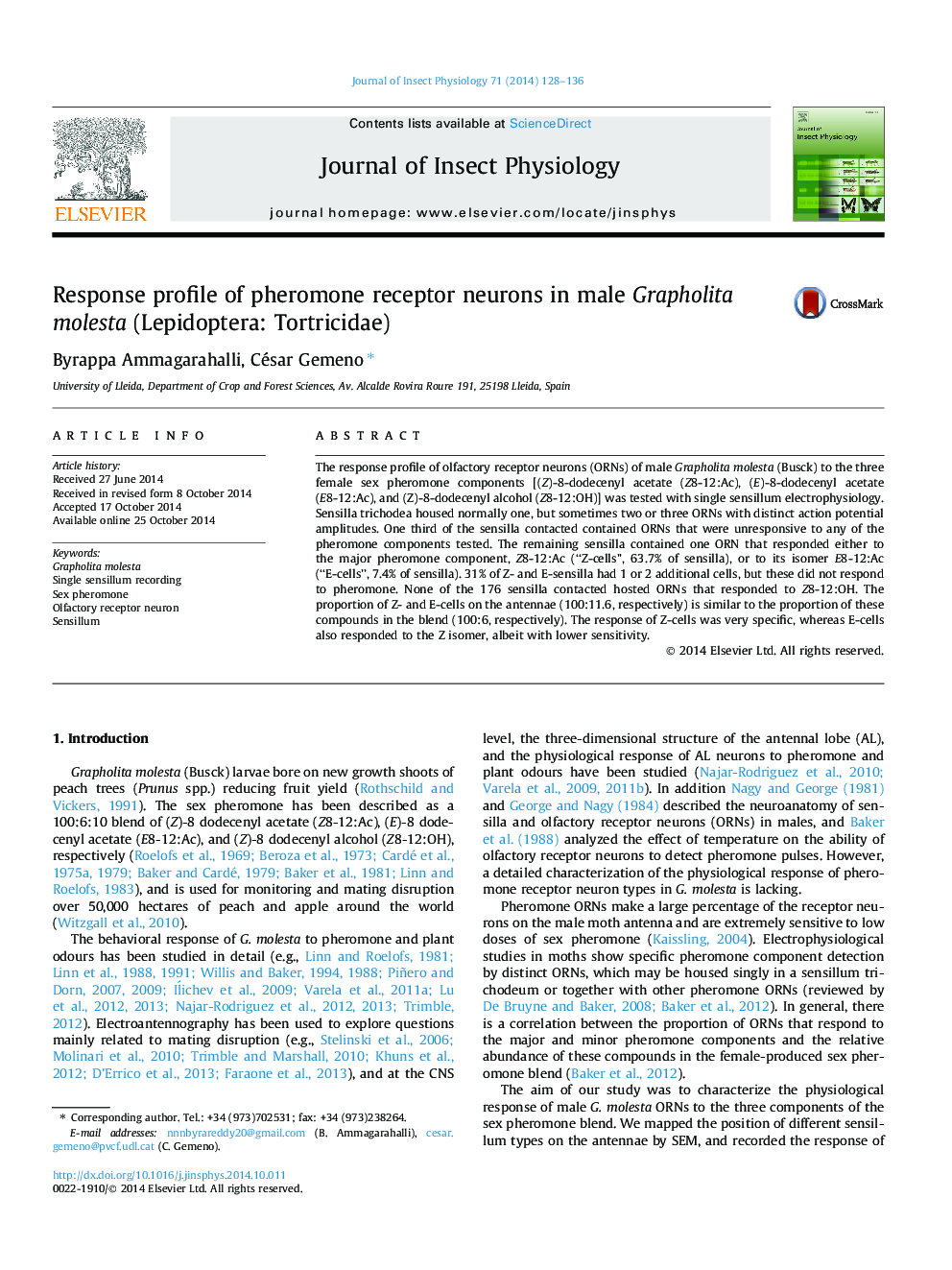| Article ID | Journal | Published Year | Pages | File Type |
|---|---|---|---|---|
| 5921571 | Journal of Insect Physiology | 2014 | 9 Pages |
â¢Olfactory receptor neurons for Z8-12:Ac and E8-12:Ac are housed in separate sensilla.â¢Z-ORNs are highly specific, whereas E-ORNs also respond to Z8-12:Ac, but with lower sensitivity.â¢No ORNs for Z8-12:OH were found.â¢30% of the sensilla housed neurons that did not respond to any of the 3 pheromone components.
The response profile of olfactory receptor neurons (ORNs) of male Grapholita molesta (Busck) to the three female sex pheromone components [(Z)-8-dodecenyl acetate (Z8-12:Ac), (E)-8-dodecenyl acetate (E8-12:Ac), and (Z)-8-dodecenyl alcohol (Z8-12:OH)] was tested with single sensillum electrophysiology. Sensilla trichodea housed normally one, but sometimes two or three ORNs with distinct action potential amplitudes. One third of the sensilla contacted contained ORNs that were unresponsive to any of the pheromone components tested. The remaining sensilla contained one ORN that responded either to the major pheromone component, Z8-12:Ac (“Z-cells”, 63.7% of sensilla), or to its isomer E8-12:Ac (“E-cells”, 7.4% of sensilla). 31% of Z- and E-sensilla had 1 or 2 additional cells, but these did not respond to pheromone. None of the 176 sensilla contacted hosted ORNs that responded to Z8-12:OH. The proportion of Z- and E-cells on the antennae (100:11.6, respectively) is similar to the proportion of these compounds in the blend (100:6, respectively). The response of Z-cells was very specific, whereas E-cells also responded to the Z isomer, albeit with lower sensitivity.
Graphical abstractDownload full-size image
